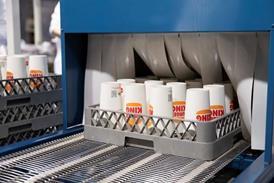
As an industry, we pride ourselves on anticipating consumer needs. We have repeatedly and successfully innovated around safety, light-weighting, and recyclability. But there is one important societal shift that remains underexplored: the rise of solo living. Dr. Igor Popovic, Managing Director Packaging Solutions at Van De Velde Packaging, takes a closer look.
Packaging lines are still geared toward the family. We churn out one-litre milk cartons, 500-gram spaghetti packs, and meat trays sized for group dinners. The assumption is always multiple users. That assumption no longer holds. More and more consumers are shopping, eating, and living alone, and they find little on our shelves designed with them in mind.
This is not a niche. As Elyakim Kislev makes clear in the book Happy Singlehood, living alone is no longer a stopgap between family stages. It is a lifestyle of choice. If we continue to design only for the family household, we are overlooking one of the fastest-growing consumer groups in the world.
Solo living Is here to stay
The numbers tell the story. In Sweden, Norway, Denmark, and Germany, over 40 percent of households are single-person, in some cities more than half. In North America, unmarried individuals are now the fastest-growing demographic group. Across Asia’s cities, solo living is expanding quickly as younger generations embrace independence.
Jamieson and Simpson, in Living Alone: Globalization, Identity and Belonging, show that this is not just a lifestyle fad but a structural demographic transformation. Urbanization, changing gender roles, and longer life expectancy have made one-person households a permanent feature of modern societies.
For us in packaging, this is not abstract sociology, but it is a consumer reality. The “average family” is no longer the only unit we should design around.
The problem with family-centric packaging
The family-first mindset has historical roots. After World War II, packaging formats grew up around economies of scale. Bulk packs made sense when one income supported several mouths.
But today, those assumptions create pain points for solo consumers. They are forced to buy family-sized packs that spoil before they can be finished. Multipacks are inconvenient when there is no one to share with. Smaller packs, when they exist, often come with higher unit costs, effectively penalizing the single shopper.
This is not just a missed opportunity. It is a message to millions of consumers that our industry has not recognized their needs.
The environmental catch-22
There is also an ecological dimension we cannot ignore. C. Moore’s Solo Living’s Eco Threat highlighted this as early as 2006: one-person households often generate more packaging waste per capita, even if they consume less overall. Why? Because packaging has not caught up with their reality. Buy in bulk, and food spoils. Buy in small quantities, and packaging materials pile up.
As manufacturers, we cannot afford to leave this paradox unresolved. If we do not design formats that balance solo convenience with sustainability, we will find ourselves blamed for both food waste and packaging waste.
What this means for packaging manufacturers
So, what do we do about it? Here are some directions worth acting on. Practical steps that we as an industry can start exploring.
Rethink portioning. We need to stop “shrinking” family packs and start designing products specifically for single and two-person households. Dedicated formats—not afterthoughts—are required across food, beverages, personal care, and household goods.
Design for convenience. Solo consumers often live in smaller spaces. They want packaging that is easy to carry, reseal, and store. They also need clear guidance on portion sizes, shelf life, and storage, to help them manage their consumption efficiently.
Position positively. Packaging is communication. If we build packs for single households, we need to present them as solutions that respect independence and modern living, not as consolation prizes for not being a family.
Keep sustainability at the center. Small does not have to mean wasteful. Modular multipacks, recyclable mono-materials, and barrier technologies that extend freshness can serve solo consumers while advancing our environmental commitments.
Collaborate beyond the factory floor. Researchers, retailers, and policymakers are already looking at the implications of solo living. If we partner with them, we can make sure our solutions align with wider social and environmental goals.
A call to action
Solo living is no longer an exception. It is a defining feature of the consumer landscape. Kislev shows us it is a lifestyle embraced with pride; Jamieson and Simpson demonstrate it is structurally embedded in our societies; and Moore reminds us of the ecological risks of ignoring it.
For packaging manufacturers, this is a moment of choice. We can keep producing for yesterday’s household or we can design for today’s. By embracing the solo consumer, we can meet unmet demand, reduce waste, and prove once again that packaging is not the problem but part of the solution.
If you liked this story, you might also enjoy:
The ultimate guide to the Packaging and Packaging Waste Regulation in 2025
How are the top brands progressing on packaging sustainability?
Everything you need to know about global packaging sustainability regulation in 2025
The key to increasing the use of reusable packaging in supermarkets






















No comments yet